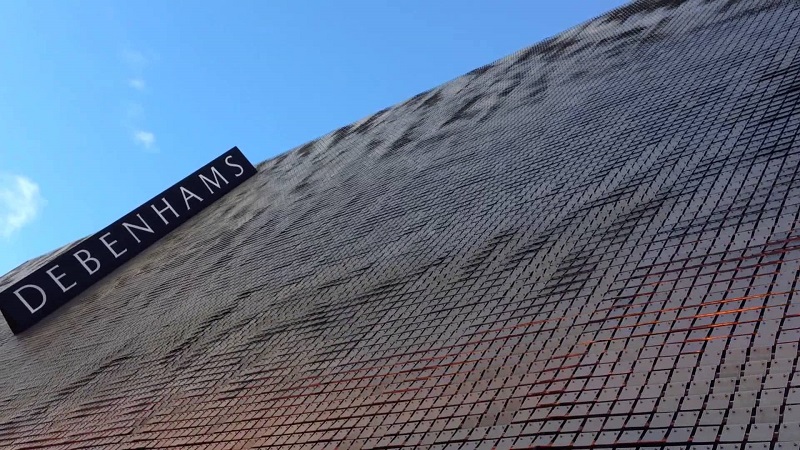Kinetic facade
A kinetic façade is one that changes dynamically rather than being static or fixed, allowing movement to occur on a building’s surface. This helps to create what the architect Buckminster Fuller called a ‘skin-like articulation’ effect, and is an extension of the idea that a building's envelope is an active system rather than just a container.
A kinetic façade can be used to manage light, air, energy, and even information. They can act to reduce solar gain as well as allowing the passage of fresh air into the building, helping to alter the interior environment. The moving elements of the façade can be programmed to respond to climatic or other environmental factors, time, levels and type of occupancy and so on to improve performance and efficiency.
With advances in sensors, materials and building management technology, designers are increasingly able to consider kinetic components as design solutions.
The Al Bahr Towers in Abu Dhabi has a computer-controlled facade made of umbrella-like panels. These panels open and close throughout the day in response to the sun’s movement, giving optimal shading and allowing light to enter the building as required.
The Berlin-based design studio WHITEvoid developed FLARE in 2008. This is a kinetic ambient reflection membrane, meaning that a building could have a ‘living skin’, enabling the façade to breathe in response to the environment. Stainless steel flakes tilted by pneumatic cylinders act to reflect natural light away from the building, maintaining a comfortable interior environment during hot weather.
Built for Expo 2012, the Theme Pavilion EXPO in South Korea, ‘breathes’ through the façade’s biomimicry. Synchronised actuators move 108 kinetic lamellas which are powered by solar panels.
Kinetic facades can also be used for aesthetic purposes, to make a strong impression, to generate interest, or as part of art exhibitions.
The 2014 refurbishment of the Oxford Street Debenhams store (see top image). Designed by Archial Architects, included a cladding screen made up of 185,000 aluminium shingles which can move independently with the flow of wind to create a fluid or ripple effect across the entire surface, as well as providing some protection against rain.
[edit] Related articles on Designing Buildings Wiki
- Biomimicry.
- Building fabric.
- Cladding for buildings.
- Curtain wall systems.
- Dynamic façade.
- Fabrik by Shildan.
- Façade retention.
- Glazing.
- Large-scale murals.
- Living façade.
- Pebbledash.
- Rustication.
- Schuppen house.
- The development of structural membranes.
- Wall types.
[edit] External resources
- DE Magazine - Why kinetic architecture is more than a spectacle
Featured articles and news
Infrastructure that connect the physical and digital domains.
Harnessing robotics and AI in challenging environments
The key to nuclear decommissioning and fusion engineering.
BSRIA announces Lisa Ashworth as new CEO
Tasked with furthering BSRIA’s impressive growth ambitions.
Public buildings get half a million energy efficiency boost
£557 million to switch to cleaner heating and save on energy.
CIOB launches pre-election manifesto
Outlining potential future policies for the next government.
Grenfell Tower Inquiry announcement
Phase 2 hearings come to a close and the final report due in September.
Progress from Parts L, F and O: A whitepaper, one year on.
A replicated study to understand the opinion of practitioners.
ECA announces new president 2024
Electrical engineer and business leader Stuart Smith.
A distinct type of countryside that should be celebrated.
Should Part O be extended to existing buildings?
EAC brands heatwave adaptation a missed opportunity.
Definition of Statutory in workplace and facilities management
Established by IWFM, BESA, CIBSE and BSRIA.
Tackling the transition from traditional heating systems
59% lack the necessary information and confidence to switch.
The general election and the construction industry
As PM, Rishi Sunak announces July 4 date for an election.
Eco apprenticeships continue help grow green workforce
A year after being recognised at the King's coronation.
Permitted development rights for agricultural buildings
The changes coming into effect as of May 21, 2024.






















